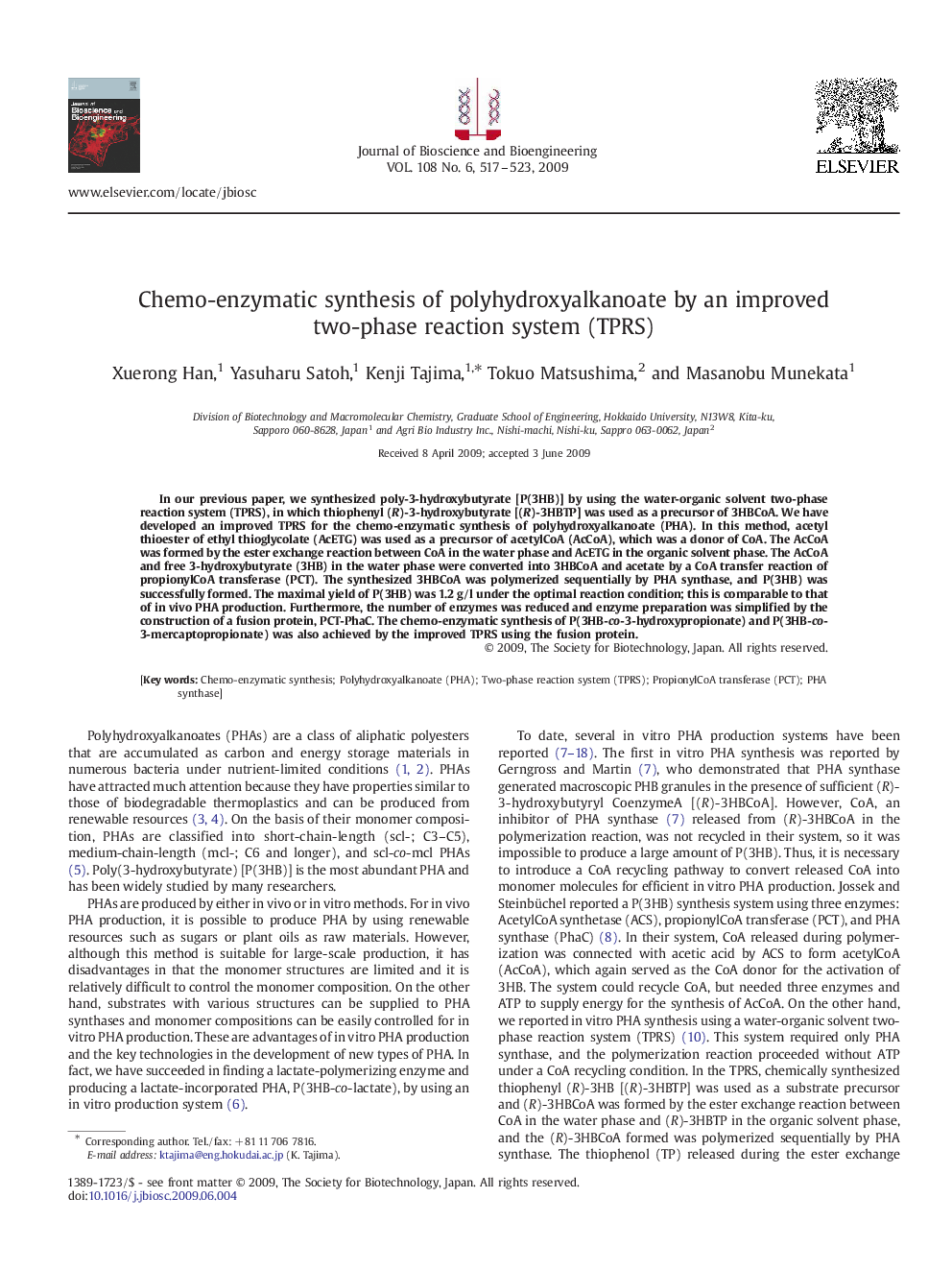| Article ID | Journal | Published Year | Pages | File Type |
|---|---|---|---|---|
| 21598 | Journal of Bioscience and Bioengineering | 2009 | 7 Pages |
In our previous paper, we synthesized poly-3-hydroxybutyrate [P(3HB)] by using the water-organic solvent two-phase reaction system (TPRS), in which thiophenyl (R)-3-hydroxybutyrate [(R)-3HBTP] was used as a precursor of 3HBCoA. We have developed an improved TPRS for the chemo-enzymatic synthesis of polyhydroxyalkanoate (PHA). In this method, acetyl thioester of ethyl thioglycolate (AcETG) was used as a precursor of acetylCoA (AcCoA), which was a donor of CoA. The AcCoA was formed by the ester exchange reaction between CoA in the water phase and AcETG in the organic solvent phase. The AcCoA and free 3-hydroxybutyrate (3HB) in the water phase were converted into 3HBCoA and acetate by a CoA transfer reaction of propionylCoA transferase (PCT). The synthesized 3HBCoA was polymerized sequentially by PHA synthase, and P(3HB) was successfully formed. The maximal yield of P(3HB) was 1.2 g/l under the optimal reaction condition; this is comparable to that of in vivo PHA production. Furthermore, the number of enzymes was reduced and enzyme preparation was simplified by the construction of a fusion protein, PCT-PhaC. The chemo-enzymatic synthesis of P(3HB-co-3-hydroxypropionate) and P(3HB-co-3-mercaptopropionate) was also achieved by the improved TPRS using the fusion protein.
